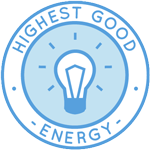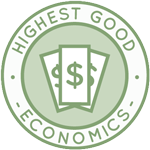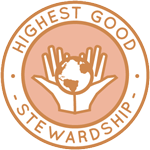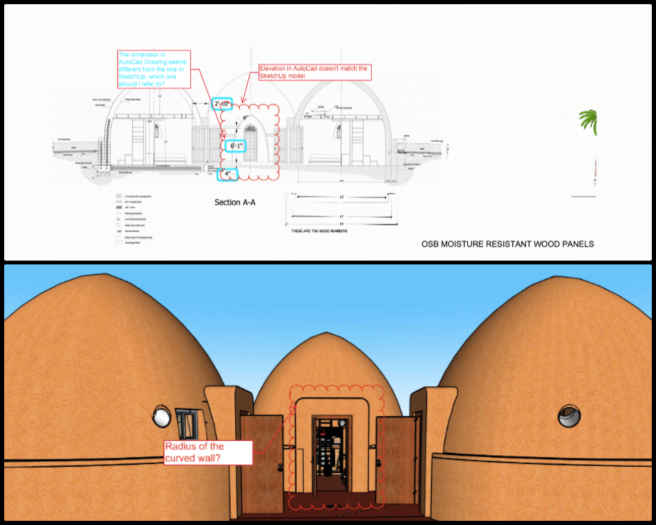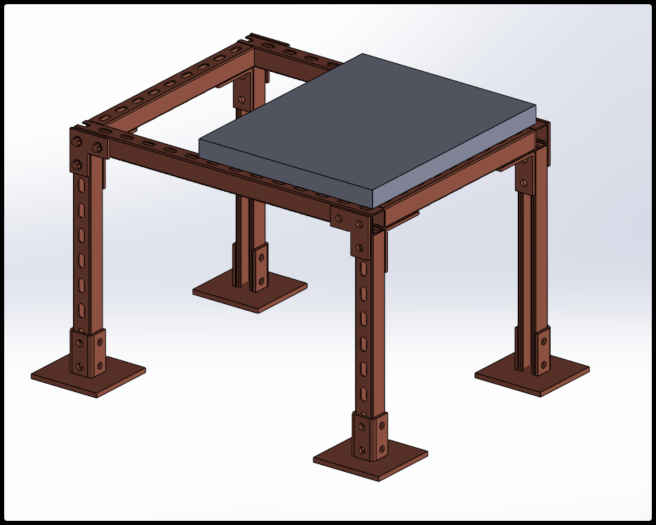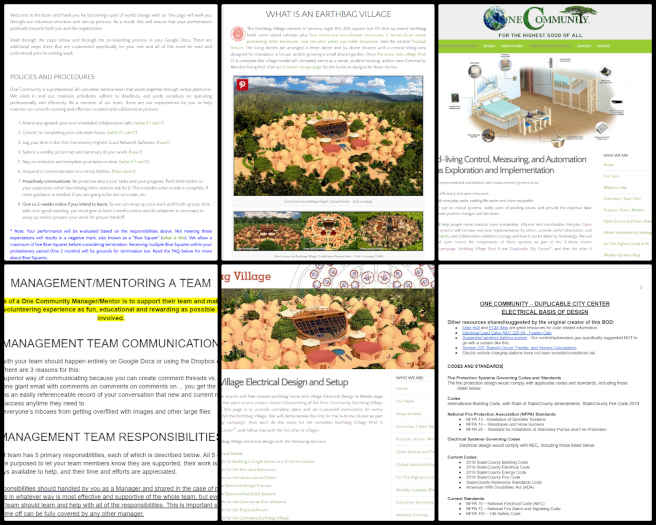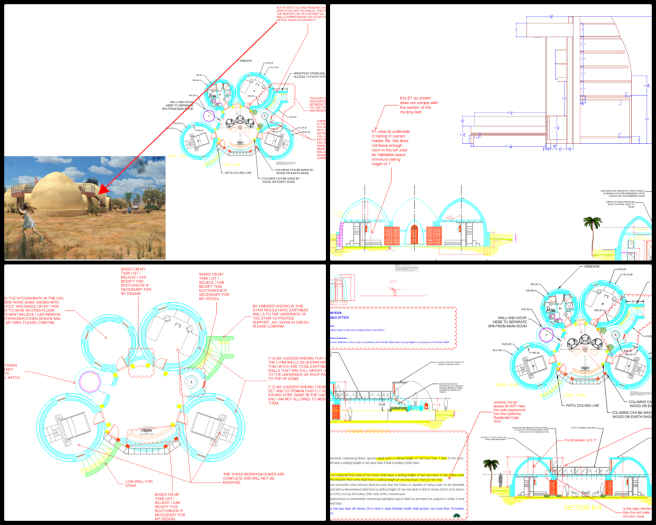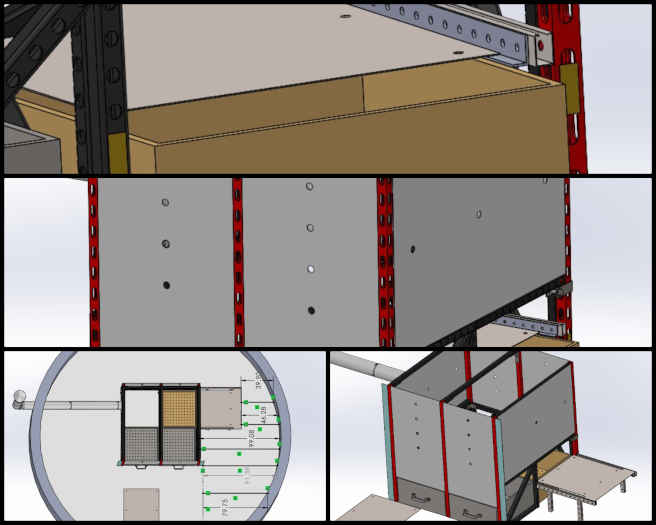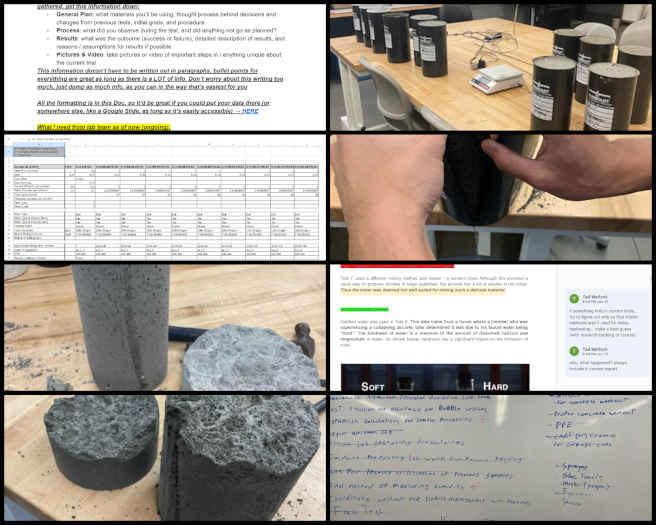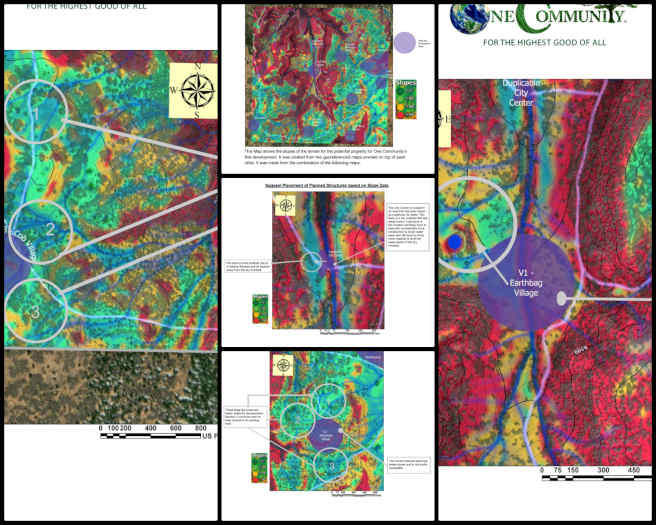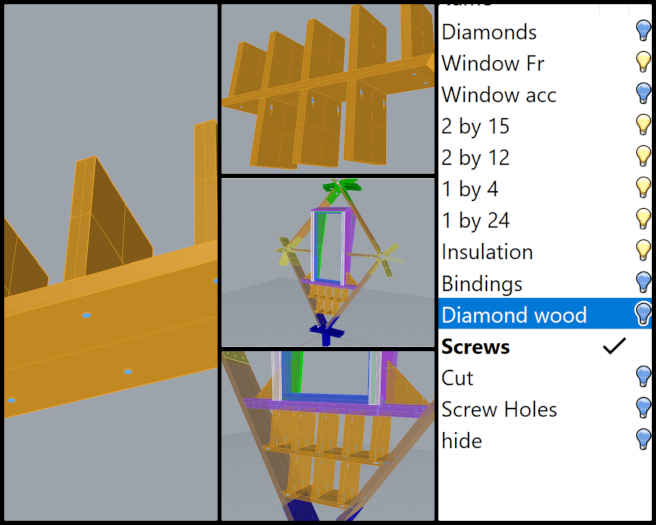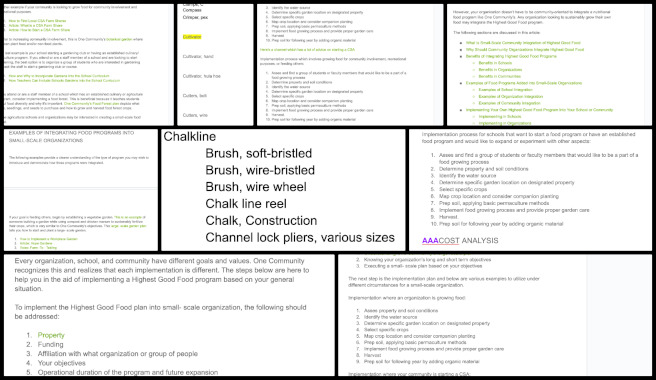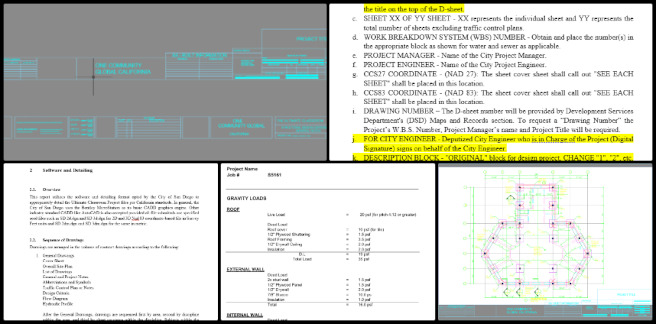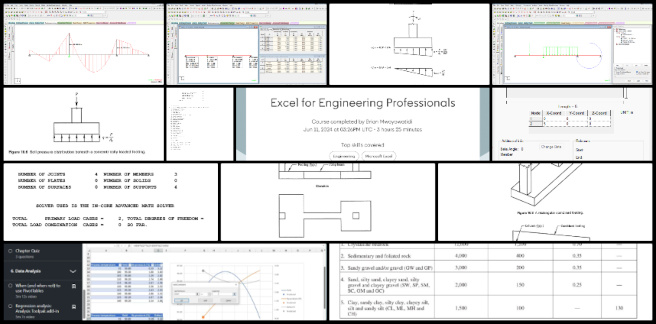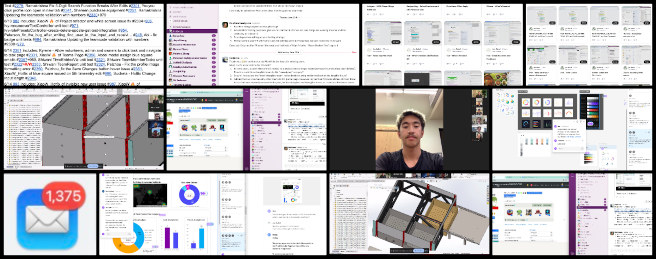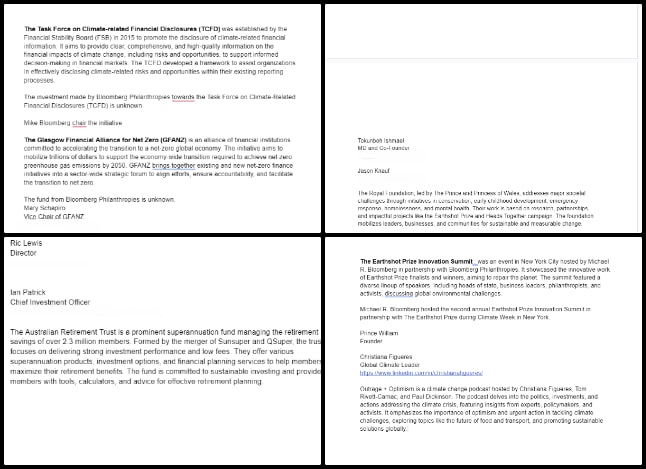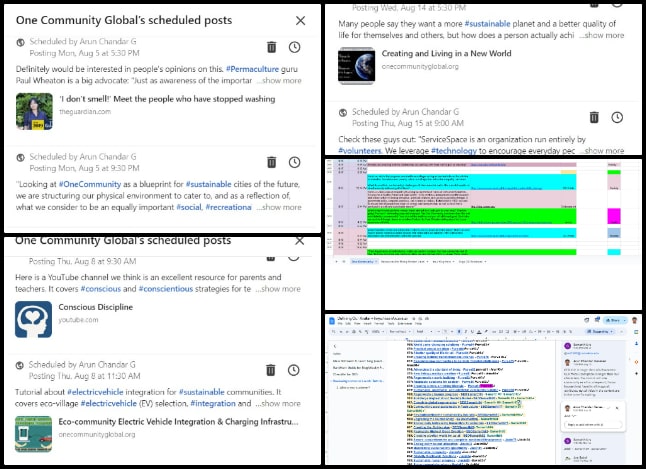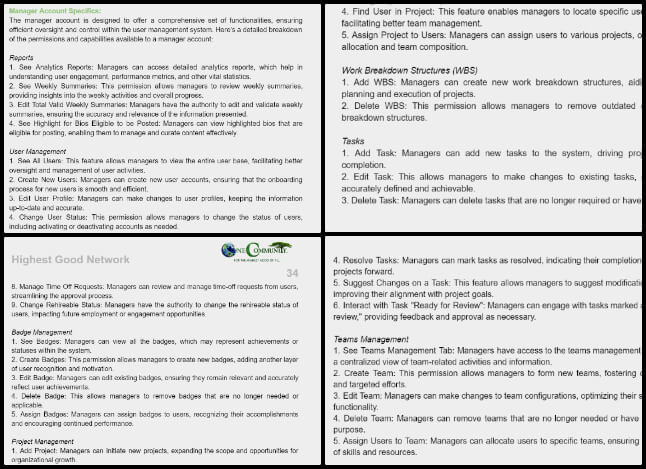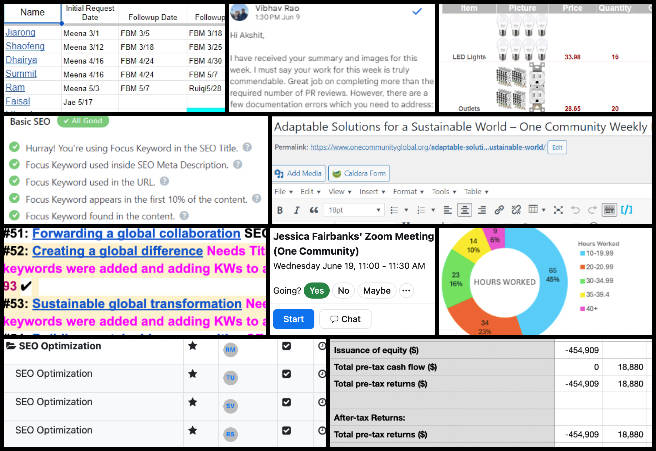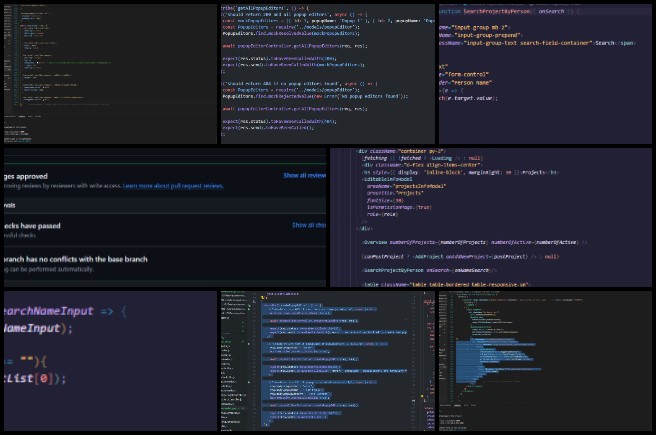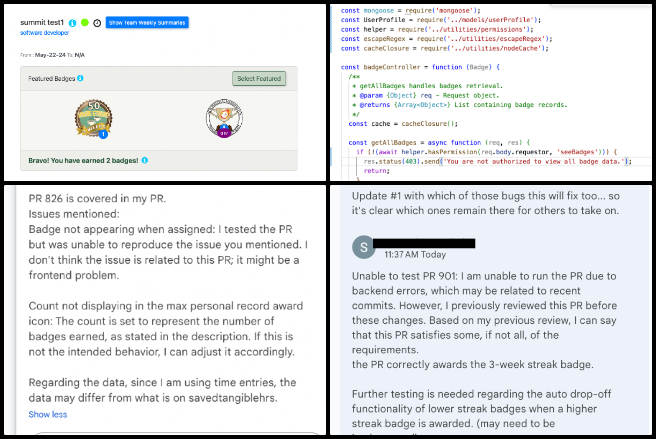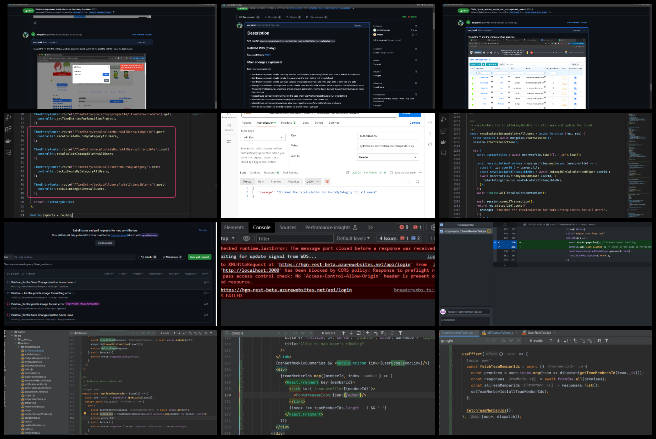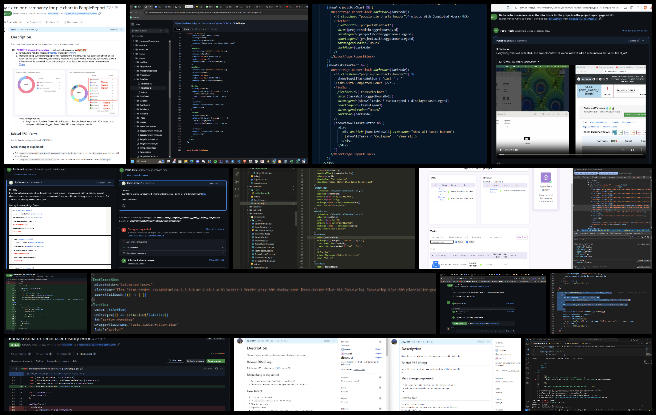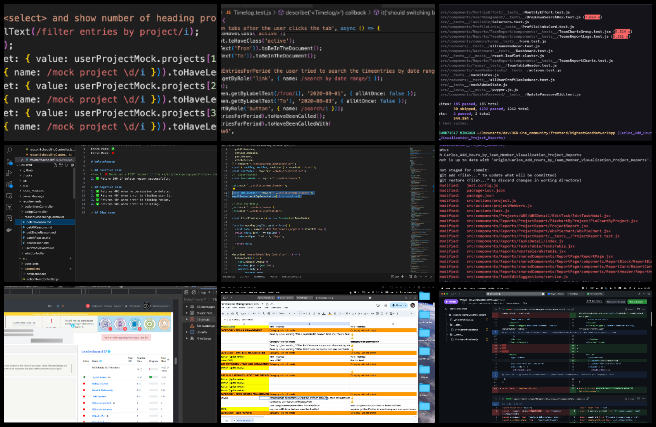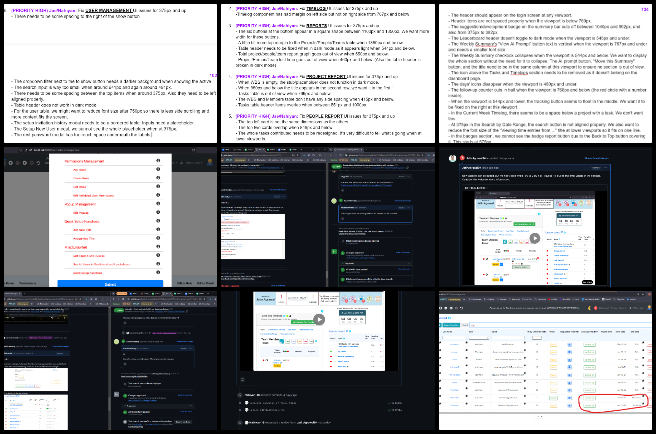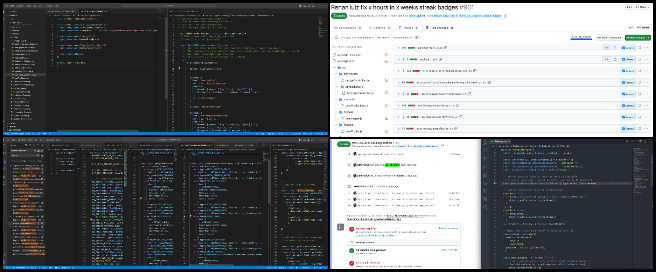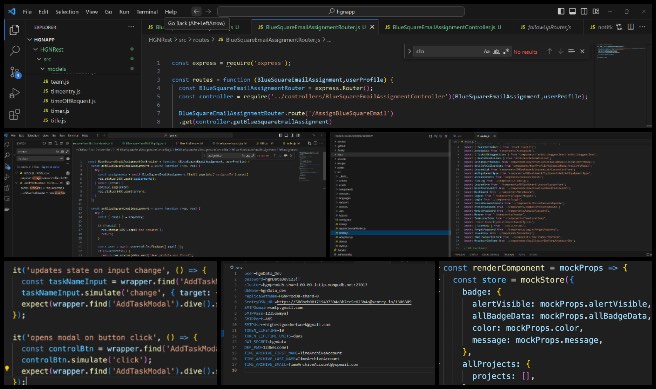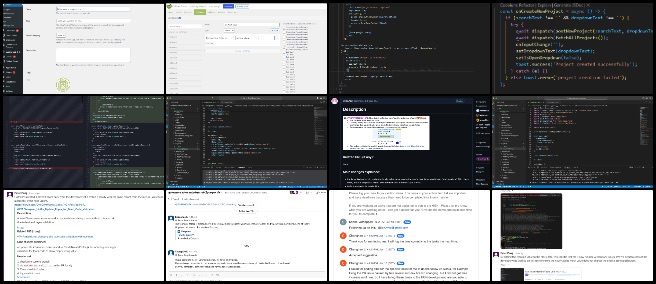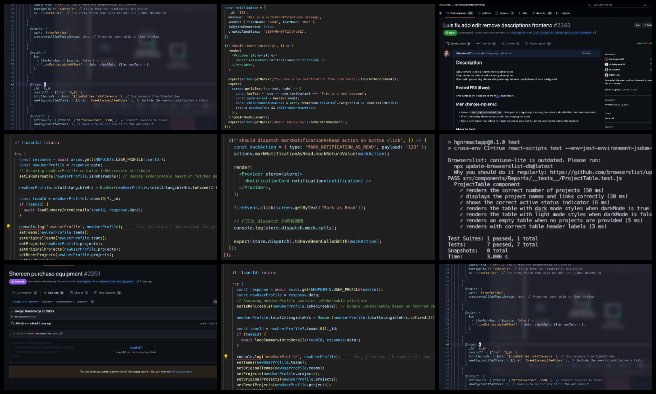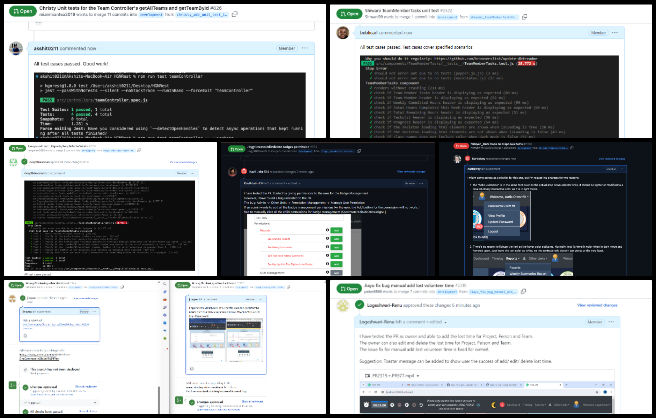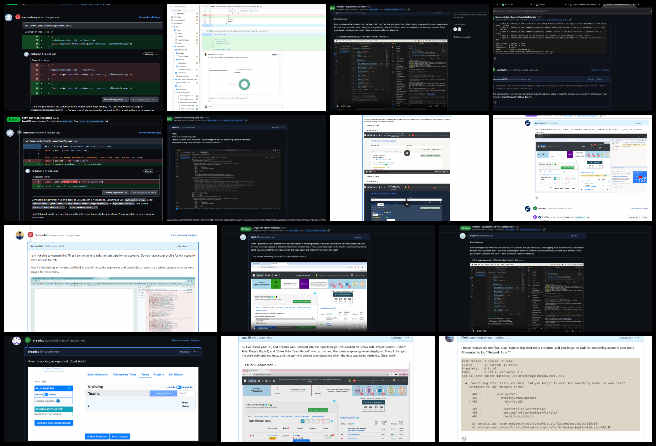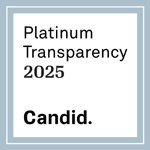Maximizing Sustainable Benefit – One Community Weekly Progress Update #587
One Community is maximizing sustainable benefit for the “The Highest Good of All.” Our holistic approach encompasses sustainable practices in food, energy, housing, education, for-profit and non-profit economic design, social architecture, fulfilled living, global stewardship practices, and more. Beyond building a community, we’re creating a replicable model set to establish teacher/demonstration hubs globally. Everything we create is open source and free-shared, evolving sustainability, and regenerating our planet. Join us on this journey towards a brighter, more sustainable future, created by an all-volunteer team.
- Here’s our project overview
- Here’s our world-change methodology
- Here’s how this becomes self-replicating
- Here’s how we are open source and free-sharing all the do-it-yourself designs
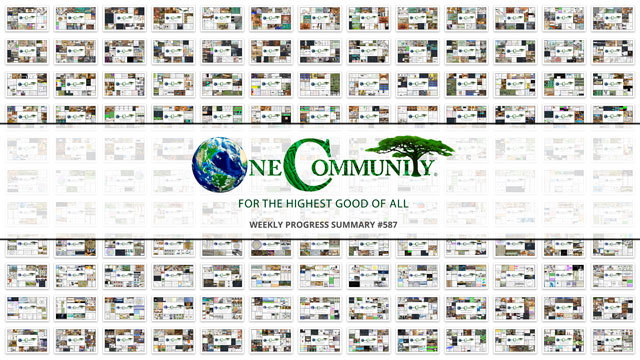
OUR MAIN OPEN SOURCE HUBS
Click on each icon to be taken to the corresponding Highest Good hub page.
One Community’s physical location will forward this movement of maximizing sustainable benefit as the first of many self-replicating teacher/demonstration communities, villages, and cities to be built around the world. This is the June 17th, 2024 edition (#587) of our weekly progress update detailing our team’s development and accomplishments:
Maximizing Sustainable Benefit
One Community Progress Update #587
DONATE | COLLABORATE | HELP WITH LARGE-SCALE FUNDING
CLICK HERE IF YOU’D LIKE TO RECEIVE AN EMAIL EACH WEEK WHEN WE RELEASE A NEW UPDATE
YOU CAN ALSO JOIN US THROUGH SOCIAL MEDIA
ONE COMMUNITY WEEKLY UPDATE DETAILS
HIGHEST GOOD HOUSING PROGRESS
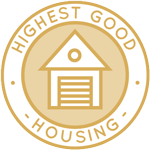 One Community is maximizing sustainable benefit through Highest Good housing that is artistic and beautiful, more affordable, more space efficient, lasts longer, DIY buildable, and constructed with healthy and sustainable materials:
One Community is maximizing sustainable benefit through Highest Good housing that is artistic and beautiful, more affordable, more space efficient, lasts longer, DIY buildable, and constructed with healthy and sustainable materials:
- Learn about how will kickstart maximizing sustainable benefit with Our Upcoming Crowdfunding Campaign
- Learn about the different village models designed for maximizing sustainable benefit: 7 Sustainable Village Models
- Visit the open source portals for the first two: Earthbag Village OS Hub | Straw Bale Village OS Hub
This week, Boya Wang continued her work helping with the roof design for the Earthbag Village 4-dome home. Boya rewatched a feedback video and several tutorials on Revit modeling and drafting. The videos focused on modeling domes using different techniques in Revit, ensuring dimensional accuracy based on AutoCAD drawings and SketchUp models. Boya also worked on detailing windows, doors, and stairs within the project. Additionally, Boya modeled the loft deck based on reference images from previous projects. The Earthbag Village is the first of 7 to be built as the housing component of One Community’s open source model for maximizing sustainable benefit. See some of this work in the collage below.
Joseph Osayande (Mechanical Engineer) continued helping finish the Vermiculture Toilet designs. This week, a report was prepared to address the average force a male versus a female can produce to push the drawer, including an analysis of the maximum steepness of an angle for pushing before it risks injury. The force required to move the drawer onto a ramp was also calculated. The previous design was updated to use unistruts, and work continued on developing the connector between the two parts of the stands that will be joined together. The vermiculture toilets and other sustainable human waste processing technologies form the basis of One Community’s open source model for maximizing sustainable benefit. See below for some of the pictures related to this work.
Khushboo Parmar (Project Manager) joined the team to help manage the teams working on the Earthbag Village designs. This week, Khushboo completed her onboarding and familiarized herself with the project, including acknowledging all required sections. She reviewed the Earthbag Village MEP and the following documents: Earthbag Village, Electrical BOD, Electrical Design and Collaboration Google Doc, and the Control and Automation systems document. Additionally, Khushboo examined key project files and the final renders. She also introduced herself to all team members, communicated her availability to assist as their servant leader, and completed nearly all of the orientation and initial setup tasks. The Earthbag village forms the basis of One Community’s open source model for maximizing sustainable benefit. See her work in the collage below.
Michaela Silva (Architect) continued working on finalizing the interior of the Earthbag Village 4-dome home design. This week, Michaela familiarized herself with the One Community software and existing Earthbag Village documents and design. She focused on reviewing the 4 dome models and associated documents to ensure project alignment and design consistency. Additionally, she researched California building codes to confirm compliance and identified specific concerns regarding upper loft ceiling heights and murphy bedroom ceiling heights that require resolution prior to advancing the design phase. The Earthbag village is the first of 7 villages to be built as part of One Community’s open source model for maximizing sustainable benefit. See her work in the collage below.
Rizwan Syed (Mechanical Engineer) also continued helping finish the Vermiculture Toilet designs. This week, Rizwan continued iterating the design of the vermiculture eco-toilet chamber using SolidWorks. He evaluated the addition of side flanges to the front structure to assess their impact on the transportability of the removable drawers, ensuring these modifications adhered to the maximum distance constraints set within the CAD framework. He also implemented significant modifications to the chamber’s support structures by replacing existing components with unistruts. His redesigns included updates to the front pillars and side supports, incorporating center slots and circular holes into the 90-inch bars for better integration into the assembly. Additionally, Rizwan developed a preliminary 3D model for an L-shaped support bracket, which is intended to facilitate the operation of the internal removable slide. The vermiculture toilets and other sustainable human waste processing technologies are a big part of One Community’s open source model for maximizing sustainable benefit. Here are a few photos showing examples of his work.
AIRCRETE TEAM
The Aircrete Testing Team’s summary, covering their work on Aircrete Compression Testing was managed by John Sullivan (CBU Chemical Engineering Student) and includes John plus Jonathan Crago (Civil Engineering Student), Preston Thompson (Civil Engineering Student), and Tad Matlock (Environmental Science Student). This week, Jonathan and his team learned the procedures for lab use from Dr. Bai, coordinated with Facilities regarding the disposal of concrete, and made test cylinders of aircrete. They also counted the number of cylinders and lids in the lab, attempted to pick up sand for stucco from Home Depot, and removed a failed cylinder from its mold. Jonathan added more variables to measure on the data spreadsheet and discussed ideal curing times with the team. Preston and his team were approved to access and use the lab, producing multiple batches to begin trial runs and opening five cylinders after standard curing times, only to find they had not cured properly. They then reworked the WBS. Tad reviewed the past two teams’ work, took notes to understand how to improve his writing, dug through past data to include important information on the main page, and sent a request to the lab team for data needed in the final report. John and the group began initial trials on aircrete, focusing on achieving consistency in the batches. After testing, it was clear that consistency remains the biggest challenge. The group attempted five different batches, improving with each attempt, but encountered issues with each one. Additionally, John and the team updated the schedule, purchased more materials, and worked on waste management procedure. These aircrete tests contribute to the housing aspect of One Community’s open source model for maximizing sustainable benefit. See below for some of the pictures related to this work.
DUPLICABLE CITY CENTER PROGRESS
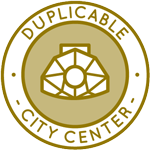 One Community is maximizing sustainable benefit through a Duplicable and Sustainable City Center that is LEED Platinum certified/Sustainable, can feed 200 people at a time, provide laundry for over 300 people, is beautiful, spacious, and saves resources, money, and space:
One Community is maximizing sustainable benefit through a Duplicable and Sustainable City Center that is LEED Platinum certified/Sustainable, can feed 200 people at a time, provide laundry for over 300 people, is beautiful, spacious, and saves resources, money, and space:
- Learn about this building and it’s function maximizing sustainable benefit within One Community: Duplicable City Center Open Source Hub
This week, Chris Blair (GIS Technician/Horticulturist) continued working with GIS data as part of One Community’s Permaculture Design. He experimented using the wizard classification tool in ArcGIS Pro to reclassify pixel colors into different values to identify optimal building areas. He also began creating a Google document to showcase new village locations for the master plan, based on Ben Missimer’s georeferenced maps. Flatter areas were identified for construction, and some village locations were suggested for relocation due to their critical positions in the watershed. Proper property modeling and understanding is a foundational part of One Community’s open source maximizing sustainable benefit model. Here are a few photos showing examples of his work.
Nika Gavran (Industrial Designer) continued her work on the Duplicable City Center dormer window installation plans. Nika focused on advancing the dormer window assembly instructions, primarily by implementing fasteners and screws for the new dormer window design. She completed the placement of screws in the bottom half of the window CAD. Additionally, she received feedback on incorporating more sustainable insulation and will investigate regulations for dome structures. The Duplicable City Center is a foundational part of One Community’s open source model for maximizing sustainable benefit. See below for some of the pictures related to this work.
HIGHEST GOOD FOOD PROGRESS
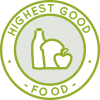 One Community is maximizing sustainable benefit through Highest Good food that is more diverse, more nutritious, locally grown and sustainable, and part of our open source botanical garden model to support and share bio-diversity:
One Community is maximizing sustainable benefit through Highest Good food that is more diverse, more nutritious, locally grown and sustainable, and part of our open source botanical garden model to support and share bio-diversity:
- Learn about the food structures for maximizing sustainable benefit within One Community: Hoop House Hub | Aquapini & Walipini Open Source Hub
- See what we’ll be growing for maximizing sustainable benefit: Gardens & Hoop Houses | Large-scale Structures | Food Forest | TA
This week, the core team continued updating and expanding the Highest Good Food tools, equipment, materials, and supplies document by adding new items. They also focused on the School Food Integration Program by revising and incorporating detailed steps for its implementation. This process is designed to encompass various uses for growing food, including community involvement, recreational activities, and providing nourishment for others. The expanded program caters to organizations of all sizes, from CSAs and small groups to schools seeking to initiate or expand their existing food programs, while also offering them the flexibility to explore new approaches. Highest Good Food is an important part of maximizing sustainable benefit with One Community’s open source plans. See their work in the collage below.
Hayley Rosario (Sustainability Research Assistant) continued helping finalize the Highest Good Food rollout plan and reviewed the Integration and Highest Good Food tools and equipment document. She worked on the Highest Good Food webpage and transferred information from the EDITs document and edited the current content, focusing on links, capitalization, images, and formatting. She also watched the provided videos and reviewed the given information. Highest Good food is an important part of maximizing sustainable benefit with One Community’s open source plans. See her work in the collage below.
HIGHEST GOOD EDUCATION PROGRESS
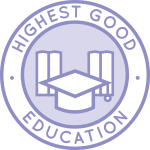 One Community is maximizing sustainable benefit through Highest Good education that is for all ages, applicable in any environment, adaptable to individual needs, far exceeds traditional education standards, and more fun for both the teachers and the students. This component of One Community is about 95% complete with only the Open Source School Licensing and Ultimate Classroom construction and assembly details remaining to be finished. With over 8 years of work invested in the process, the sections below are all complete until we move onto the property and continue the development and open sourcing process with teachers and students – a development process that is built directly into the structure of the education program and everything else we’re creating too:
One Community is maximizing sustainable benefit through Highest Good education that is for all ages, applicable in any environment, adaptable to individual needs, far exceeds traditional education standards, and more fun for both the teachers and the students. This component of One Community is about 95% complete with only the Open Source School Licensing and Ultimate Classroom construction and assembly details remaining to be finished. With over 8 years of work invested in the process, the sections below are all complete until we move onto the property and continue the development and open sourcing process with teachers and students – a development process that is built directly into the structure of the education program and everything else we’re creating too:
- Program overview for integration into the One Community model for maximizing sustainable benefit: Education Open Source Hub
- How the components work together: How to use the Education for Life Program
- Lesson Plans for Life – Lesson Plans How-to
- Foundations of Outstanding Leaders, Teachers, and Communicators
- Curriculum for Life
- Teaching Strategies for Life
- Learning Tools and Toys for Life
- Evaluation and Evolution
This week, Apoorv Pandey (Mechanical Engineer) continued helping with the engineering details for The Ultimate Classroom part of the Highest Good Education component. He brainstormed ideas for the title block with his manager, Brian Muigai Mwaniki (Structural Engineer), and worked on cleaning up the title block template for the AutoCAD file. He also focused on his write-up for the structural engineering report where the formatting and editing of the report are taking longer than anticipated. Apoorv updated the report write-up with new AutoCAD drawings and plans to consult with the senior engineer about necessary changes to the report and the drawings to accommodate all design elements in the draft and the title block. The One Community model of combining forward-thinking education with sustainably built classrooms like this are an excellent example of maximizing sustainable benefit. See the collage below for their work.
Brian Mwoyowatidi (Graduate Structural Engineer) continued helping with the engineering details for The Ultimate Classroom part of the Highest Good Education component. He prepared a plan and strategy for this task and developed his skills in the necessary software, completing an ‘Excel for Engineering Professionals’ course through LinkedIn Learning and earning a certificate of completion. Additionally, Brian enhanced his proficiency in STAAD.Pro, learning to model and analyze a simple beam, perform necessary checks, and release an analysis report. He researched relevant codes, identifying ACI 318-2019 and CALGreen as the governing codes in California. He is currently reviewing these codes to extract key provisions applicable to the project and is preparing a summary report of relevant standards for footer, foundation, and flooring systems. Brian’s summary report currently covers about 50% of the key information and requirements from ACI 318-2019 chapter 10. The One Community model of combining forward-thinking education with sustainably built classrooms like this are an excellent example of maximizing sustainable benefit. See the collage below for their work.
HIGHEST GOOD SOCIETY PROGRESS
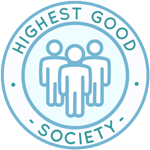 One Community is maximizing sustainable benefit through a Highest Good society approach to living that is founded on fulfilled living, the study of meeting human needs, Community, and making a difference in the world:
One Community is maximizing sustainable benefit through a Highest Good society approach to living that is founded on fulfilled living, the study of meeting human needs, Community, and making a difference in the world:
- Read the Highest Good society overview: Highest Good Society
- Learn about the model for fulfilled living and sharing: A Day in the Life
- Learn about the 4 economic models: RBE | For-profit | Non-profit | Entrepreneurship
This week, the core team completed over 53 hours managing One Community volunteer-work review not included above, emails, social media accounts, web development, new bug identification and bug-fix integration for the Highest Good Network software, and interviewing and getting set up new volunteer team members. They also shot and incorporated the video above that talks about maximizing sustainable benefit and how maximizing sustainable benefit is a foundation of the bigger picture of everything One Community is doing. The pictures below show some of this work.
Aaron Wang (Fundraising Assistant) continued his in depth research into connections with Michael R. Bloomberg, identifying emails and background information of individuals associated with Bloomberg. This focused effort is part of Aaron’s strategy to better facilitate connections with funders by establishing relationships with relevant people involved in these networks. His methodical and systematic approach is aimed at strengthening his networking capabilities within the philanthropic community, aiding One Community‘s goal for maximizing sustainable benefit. The following images showcase his work for the week.
Arun Chandar Ganesan (Data Analyst and SEO and Social Media Assistant) focused on the SEO work completed by other volunteers, checking and verifying additional webpages, revisiting and clearing previously abandoned pages. He also continued scheduling LinkedIn posts for August and the first week of September and coordinated the scheduling of posts on other social media pages with a team of two. His work on social media helps One Community to broaden our reach and spread our message about maximizing sustainable benefit. The following images show his work for the week.
Prashanth Gowri Shankar Uppudi (Admin and Project Manager) added detailed information on permissions management to the document, including specifics about the core team’s functionalities and related information. He coordinated with Deepthi to address issues with owner account creation, leading to final corrections and fixes. Additional content on test accounts was incorporated, covering account creation and test account rights. He also worked on the development of the HGN Manual, which now includes comprehensive content on accounts, permissions, and levels of interaction. By editing functionalities and managing permissions, he contributed to the One Community mission for maximizing sustainable benefit. The following images highlights his progress for the week.
ADMINISTRATION TEAM
The Administration Team’s summary, covering their work administrating and managing most of One Community’s ongoing process for maximizing sustainable benefit was managed by Sneka Vetriappan (Data Analyst) and includes Durgeshwari Naikwade (Data Analyst), Jessica Fairbanks (Administrative Assistant), Jim Zhang (Administrative Assistant), Olawunmi “Ola” Ijisesan (Administrative and Management Support), Ram Shrivatsav (Data Analyst and Admin assistant), Ratna Meena Shivakumar (Data Analyst and Admin), Ruiqi Liu (Administrative Assistant), T R Samarth Urs (Data Analyst), Vibhav Chimatapu (Data Analyst/Admin Assistant), and Xiaolai Li (Administrative Assistant). This week, Durgeshwari excelled in creating collages and developing a Figma wireframe for HR dashboards while also contributing to the recruitment process. Jessica updated work breakdown structures for Highest Good Food and coordinated volunteer interviews. Jim corrected image title errors in past blogs and began research on ESG investing. Ola reviewed PR team work, provided detailed feedback, and gained insights into Pinterest scheduling. Ram did his part maximizing sustainable benefit as he focused on optimizing SEO articles, ensuring high scores and compliance with rules.
Ratna managed OC Administration tasks, from creating weekly summaries and collages to analyzing Facebook analytics and refining the defining avatar page. Ruiqi completed reviews for the Dev Dynasty and Git-R-Done teams, managed bio announcements, and continued her Lightbulbs research project. Sneka herself worked on SEO optimization, reviewed time logs, and updated the webpage with summaries and collages. Samarth managed his PR review team, optimized SEO for blogs, and had his blog post accepted without adjustments. Vibhav did his part maximizing sustainable benefit as he enhanced PR team work, provided feedback, and boosted blog SEO scores, incorporating strategic keyword density and impactful titles.
Xiaolai organized documents and summaries, worked on ESG and solar energy projects, and prepared the webpage for final review. One Community’s model for maximizing sustainable benefit includes developing and maintaining huge administration team like this. You can see the work for the team in the image below.
GRAPHIC DESIGN TEAM
The Graphic Design Team’s summary was managed by Zuqi Li (Administrative Assistant and Economic Analyst) and included Ashlesha Navale (Graphic Designer) and Shayan Afkari (Graphic Designer), covering their work on graphic designs for maximizing sustainable benefit. This week, Ashlesha worked on creating three Volunteer Announcements, including three bio images and three announcement images. She also developed web content for all three volunteer announcements and researched and curated a collection of nature-based background images and various theme-based images for future use in creating Social Media and YouTube Preview/Intro Images. Shayan created two new bio images and announcement images and completed the web pages for these new bios. Additionally, he reviewed and corrected various parts of the previous bios to ensure accuracy and consistency. See the Highest Good Society pages for more on how this contributes to maximizing sustainable benefit. See the collage below to view some of their work.
HIGHEST GOOD NETWORK PROGRESS
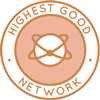 One Community is maximizing sustainable benefit through open source Highest Good Network® software that is a web-based application for collaboration, time tracking, and objective data collection. The purpose of the Highest Good Network is to provide software for internal operations and external cooperation. It is being designed for global use in support of the different countries and communities replicating the One Community sustainable village models and related components.
One Community is maximizing sustainable benefit through open source Highest Good Network® software that is a web-based application for collaboration, time tracking, and objective data collection. The purpose of the Highest Good Network is to provide software for internal operations and external cooperation. It is being designed for global use in support of the different countries and communities replicating the One Community sustainable village models and related components.
- Learn about our open source community collaboration and management software designed to objectively measure our processes for maximizing sustainable benefit: The Highest Good Network
This week, the core team continued their work on the Highest Good Network PRs testing, confirming the fixed PRs. They did a final review of the Murphy Bed Assembly Instruction PDF document, resolving the last comments related to found issues. They confirmed the following fixed issues: Adding a team to a profile disables saving the changes for other tabs (PR 2271), Dark mode set up in the links section of user profiles (PR 2295), enlarging the blue square description box to auto-fit (PR 2333), and enabling command (mac)/control (PC) + click profile icon from the Timelog page (PR 2341). However, some PRs were not fixed, including creating the ability for admin/owner users to approve and apply “suggested” changes on a task (2200 + 914), where a rejected suggestion by one Admin/Owner account still shows as not processed for another, and fixing edit time entry tracking and blue square function (PR 2131), where no emails were generated for editing time logs. They also reported issues with the “save changes” button (PR 2351), which still occurs on any profile tab, and with the 5-letter code (PR 2330, PR 979), which accepts upper/lower case letters and numbers in any position despite the warning message. Additionally, they reported a new issue of getting a white screen when accessing the Team page and recorded this issue when accessing Team information from the Report page. They had set up data for PRs BE619 and FE826 regarding the “New Max-Personal Record Award” for the “Tatyana-test Owner” account. See the Highest Good Society and Highest Good Network pages for more on how this relates to maximizing sustainable benefit. The collage below shows some of their work.
ALPHA SOFTWARE DEVELOPMENT TEAM
This week, the Alpha Team’s summary, covering their work on the Highest Good Network software was managed by Zuqi Li (Administrative Assistant and Economic Analyst) and includes Anand Seshadri (Software Engineer), Jordy Corporan (Software Engineer) and Nathalia Carnevalli (Full Stack Software Developer). The Highest Good Network software is how we will manage and measure our processes for maximizing sustainable benefit across our social architecture, construction, production, and maintenance processes. Anand fixed the horizontal scrollbar issue on responsive screens. After testing the responsive screen scrollbar at different widths, he identified the issue occurring below a specific screen width. To fix this, Anand wrapped the TeamsTableHeader in a div on the Teams.jsx page and added custom CSS for screen widths below 576px, as Reactstrap couldn’t address the issue. Additionally, Anand reviewed and responded to a couple of issues raised regarding the previous dark mode feature on modals in the Reports page. Jordy did his part maximizing sustainable benefit as he worked on resolving the merge conflict introduced by Jae to ensure everything was in order. He fixed the sanitize file in his PR#925 so the branch could be pushed to production.
Nathania worked on two new tasks: removing the note “(Note: Only works on Permission Management Page)” from editable modals and implementing a function to search projects by person. She also made adjustments to her task of adding a popup “i” to the Weekly Summaries Report page. Additionally, Nathania reviewed and approved some pull requests, specifically #2344, #2345+#985, and #2349. See the Highest Good Society and Highest Good Network pages for more on how this relates to maximizing sustainable benefit. View some of the team’s work in the collage below.
BADGES BUGS SOFTWARE DEVELOPMENT TEAM
The Badges Bugs Team’s summary overseeing advancements in the Highest Good Network software was managed by Summit Kaushal (Backend Software Developer). The Highest Good Network software is how we’ll be managing and objectively measuring our process for maximizing sustainable benefit through our social architecture, construction, production, and maintenance processes. This week, Summit reviewed PR 901, addressing changes that resolved conflicts but caused new issues. The effort included debugging and potential changes to the JSON file. Additional debugging in the BadgeController involved altering quotes, although this change seemed unrelated to the issue. The debugging process for PR 901 continues. Summit also reviewed the responsibilities of a new managerial role, including related documentation. PR 947 was reviewed for issues mentioned by Jae, with attempts to reproduce the reported errors, which were unsuccessful. Additionally, PR 826 was reviewed and found that its description was satisfied within PR 947. See the Highest Good Society and Highest Good Network pages for more on how this relates to maximizing sustainable benefit. View some of the team’s work in the collage below.
BINARY BRIGADE SOFTWARE DEVELOPMENT TEAM
The Binary Brigade Team’s summary overseeing advancements in the Highest Good Network software was managed by Min Sun (Software Engineer) and includes Aaryaneil Nimbalkar (Software Developer), Huijie Liu (Software Engineer), Peizhou Zhang (Software Engineer) and Sandhya Adavikolanu (Software Developer). The Highest Good Network software is how we’ll be managing and objectively measuring our process for maximizing sustainable benefit through our social architecture, construction, production, and maintenance processes. This week, Aaryaneil completed the Project Table unit tests, and a pull request was created for them. A new pull request for the VolunteeringTimeTab component was also created, and changes were made based on reviews. The following PRs were tested and reviewed: #2328 (dark mode for dropdown items), #2327 (dark mode for BMDashboard), #2326 (color issue fix in pie charts), and #2353 (unit tests for notifications). Additionally, PRs #2344 (ignores spaces in user management), #981 (unit test for add roles controller), and #976 (unit test for popup editor backup controller) were tested and reviewed.
Huijie completed the task of fixing the bug where hours displayed in the time log and profile page did not match. She improved the methods for recalculating tangible hours, reducing the request processing time. She also implemented similar backup and recalculation methods for intangible hours. She tested the APIs using Postman, confirming that they performed correctly. Additionally, she began working on the role distribution pie chart for the summary dashboard development task. Min did his part maximizing sustainable benefit as he reviewed teammates’ previous week summaries, time logs, photos, and videos, and completed his first week of management tasks. Min continued to work on adding manager icons to the task tab. He created extra methods for fetching team members’ user IDs based on team IDs and added clickable icons that navigate to the personal profile on the task page. The next step is to make the icons the initials of the user and format them better. Concluding the week, Min compiled his weekly summary, documented work through videos and photos, and submitted everything for review. Additionally, Min created a new folder in Dropbox for the team’s pictures, selected the best images of each team member, and submitted them for review, along with drafting and proofreading the team’s weekly summary. Peizhou did his part maximizing sustainable benefit as he fixed his previously created PRs, closed the old ones, and created new replacement PRs which have now been merged. He attempted to solve the assigned task but encountered several issues after fetching from the origin. Most of these issues were resolved, except for a CORS error that prevented the program from running.
Sandhya developed the ShareAsPDFButton.js component for the “Weekly Volunteer Summary” dashboard, which generates a PDF document for sharing volunteer statistics using the @react-pdf/renderer library. She resolved dependency conflicts, addressed ESLint-related errors, and resolved initial rendering issues. Additionally, she created a PDFDocument component for generating the PDF document for the “Weekly Volunteer Summary” page and reviewed PR changes, including adding spinning wheels to indicate data loading. Sandhya also resolved a priority bug regarding badge data not displaying on the summary page and confirmed her assignments within the development team. See the Highest Good Society and Highest Good Network pages for more on how this relates to maximizing sustainable benefit. View some of the team’s work in the collage below.
BLUE STEEL SOFTWARE DEVELOPMENT TEAM
The Blue Steel Team’s summary, presenting their work on the Highest Good Network software was managed by Jingyi Jia (Software Engineer, Team Manager), and includes Bhuvan Dama (Full stack Developer), Imran Issa (Software Developer), Jay Srinivasan (Software Engineer), Parth Rasu Jangid (Software Developer), Ramakrishna Aruva (Software Engineer), and Tzu Ning “Leo” Chueh (Software Engineer). The Highest Good Network software is how we’ll be managing and objectively measuring our process for maximizing sustainable benefit through our social architecture, construction, production, and maintenance processes. This week, Parth reviewed four pull requests, specifically #979+2330, #2315, #2323, and #2331, while continuing to focus on the underlying codebase and its functionality. He completed writing unit tests for the TimeOffRequest Controller, identifying several areas for potential improvement. Jay did his part maximizing sustainable benefit as he took on the role of reviewing Team Blue Steel’s work from the previous week and provided personalized feedback to each team member. He tackled an issue with inconsistent badge displays across various pages and resolved it by standardizing the use of the BadgeImage component and adjusting CSS for alignment, culminating in a new pull request after fixing related test failures. Ramakrishna worked on enhancing both backend and frontend components of an assigned task, addressing permission-based access controls and eliminating unnecessary API calls, detailed in PR #2349. He also reviewed several other pull requests and began laying the groundwork for a new task, focusing on identifying the most effective implementation strategy.
Tzu Ning attempted to style the TextSearchBox component to align with the Select components in the TasksTable. Despite various styling attempts, including the use of Tailwind CSS, the desired visual adjustments remained elusive. Bhuvan engaged in various development tasks, dealing with build and Git-related issues before moving on to finalize test cases for the TableFilter.jsx, planning to wrap up with a pull request soon. Meanwhile, Imran completed the backend for a task from the previous week, prepared several of his previous PRs for merging by resolving merge conflicts, and awaited assistance for unresolved test cases.
Jingyi implemented the ‘editHeaderMessage’ permission feature with new pull requests #2345 and #985, allowing specific volunteers to modify the header message directly through the system interface. Jingyi also reviewed six “high priority” pull requests, providing critical feedback to enhance system functionality and security. See the Highest Good Society and the Highest Good Network pages to learn more on how their work contributes to maximizing sustainable benefit. See below to view their work.
CODE CRAFTERS SOFTWARE DEVELOPMENT TEAM
The Code Crafters Team’s summary, covering their work on the Highest Good Network software, was managed by Anirudh Ghildiyal (Software Engineer) and includes Carlos Gomez (Full-stack Software Developer), Weiyao Li (Software Engineer) and Xiaoyu Chen (Software Engineer). The Highest Good Network software is how we’ll manage and objectively measure our process for maximizing sustainable benefit through our social architecture, construction, production, and maintenance processes. Anirudh helped resolve issues faced by teammates, and took updates from those experiencing delays, connecting them with others to expedite solutions.
Xiaoyu focused on resolving a posting error in the reason schedule controller for a mock user and mock reason, completing the GET method for reason scheduling and correcting previous parameter settings. She also implemented the PATCH and DELETE methods for managing reasons and attempted to mock an email sender using a method outlined in a recent pull request.
Weiyao worked on the “add roles” feature, which required edit access to create roles with permissions, and is currently communicating with Jae for pretesting before proceeding with the code, as well as spending time learning React, Redux, and testing concepts essential for future features. Carlos did his part maximizing sustainable benefit as he addressed lint conflicts in PR 2310 by modifying label tags in over seven files, then improved the “npm run test” command, enhancing more than 25 files. He also approved PR 2300 and requested a review for PR 2348 in the OneCommunityGlobal/HighestGoodNetwork repository. See the Highest Good Society and Highest Good Network pages for more on how this relates to maximizing sustainable benefit. The collage below shows some of this work.
DEV DYNASTY SOFTWARE DEVELOPMENT TEAM
The Dev Dynasty Team’s summary, covering their work on the Highest Good Network software, was managed by Nahiyan Ahmed (Full Stack Software Developer) and includes Jatin Agrawal (Software Engineer), Kaushik Malikireddy (Full Stack Developer Intern), and Mingqian Chen (Software Engineer). The Highest Good Network software is how we’ll manage and objectively measure our process for maximizing sustainable benefit through our social architecture, construction, production, and maintenance processes. Nahiyan added a new commit to PR 2013 to fix a console log error related to table row nesting, eliminating all console log errors and making the PR ready for merging. He then took on a project to lead a frontend team in making the entire website work in mobile view. He started by creating a detailed list of bugs found within the dashboard and subsequently did the same for other pages, including the timelog, all reports, user management, and project pages. Kaushik did his part maximizing sustainable benefit as he worked on a task to change a button to delete the final day, discovering that the button’s value is undefined, causing it to always be set to false and indicating a potential need for a backend service to fetch the correct details. He tested scenarios where the value of “rehireable” is set to false and assisted his team on Slack. He completed the review of nine pull requests, committed code from a previous task, and requested a review from the team, working on various frontend and backend tasks.
Mingqian continued her work on the same project, deepening her understanding of Axios for backend communication and testing accounts and references. She studied relevant code files, including userProjects.js, ProjectMembers.js, projects.js, task.js, and team.js, with particular attention to wbs.js. Jatin did his part maximizing sustainable benefit as he addressed two bugs from the document: creating the Quick Setup Function Permission and creating the Company Dashboard for Admins (Volunteer Trends Chart). He established the functionality for the first bug, submitted a pull request after final checks, and developed the basic outline for the second bug. Additionally, Jatin worked on five new frontend pull requests and three pull requests as requested by the maintainer, including PR#2344, PR#2343, PR#2331, PR#2330, PR#2323, PR#2299, PR#2102, and PR#2013. See the Highest Good Society and Highest Good Network pages for more on how this relates to maximizing sustainable benefit. The collage below shows some of this work.
EXPRESSERS SOFTWARE DEVELOPMENT TEAM
The Expressers Team’s summary, covering their work on the Highest Good Network software, was managed by Christy Guo (Software Engineer) and includes Jiayu Huang (Software Engineer), and KyoSook Shin (Software Engineer). The Highest Good Network software is how we’ll be maximizing sustainable benefits throughout our social architecture, construction, production, and maintenance processes. This week, Christy focused on enhancing the UI for the Hour Task Visualization, resolving backend connectivity issues, and reviewing unit and integration test-related pull requests (PR981, PR976, PR973, PR945). She plans to perfect the visualization further and integrate it with backend APIs.
Jiayu did her part maximizing sustainable benefit as she resolved a merge conflict for PR1913, added support for Dark Mode, addressed merge conflicts, fixed bugs in PR1984 and PR765 related to inventoryTypeReducer file discrepancies, and resolved merge conflicts in PR1710. He updated three pull requests from Demi, ensuring all tests passed, and reviewed backend PR901 and PR665, determining that PR901 did not address the “X-hours in X-weeks streak fix needed for auto dropoff” bug.
KyoSook analyzed the ItemList component to align it with form input styles, added a scroll-down menu to view project members, and discovered the need for fetching userProfile dispatch to obtain detailed member information. She faced challenges in understanding server-client communication and Redux states, examining the fetchAllMembers routine, Redux state, dispatch, actions, and server-side database. A client-server handshake was determined to be necessary for BM to fetch project members, leading to the addition of projectMemberAction.js under actions/bmdashboard and BM_PROJECT_MEMBERS in URL.js. A route and controller for this URL on the backend still need to be added. See the Highest Good Society and Highest Good Network pages for more on how this relates to maximizing sustainable benefit. See the collage below for the team’s work this week.
GIT-R-DONE SOFTWARE DEVELOPMENT TEAM
The Git-R-Done Team’s summary, covering their work on the Highest Good Network software, was managed by Hiral Soni (Full Stack Developer) and includes Chris Chen (Software Engineer Intern), Kavil Rajendra Jain ( Software Developer), Malav Patel (Software Developer), Nishitha Shetty (Software Engineer), Sushmitha Prathap (Software Developer) and Youyou Zhang (Software Developer). The Highest Good Network software is how we’ll be managing and objectively measuring our process for maximizing sustainable benefit across our social architecture, construction, production, and maintenance processes.
This week, Hiral worked on the weekly summary branch #2016, made the necessary changes, and updated the pull request. Additionally, she addressed issues related to console log errors on branch #2199 and resolved the conflicts in that branch. Kavil verified the following Pull Requests (PRs): PR 2300 was verified to function correctly for both Admin and Owner roles, with the Admin popup being non-editable and the Owner popup editable, and a suggestion was made to improve dropdown visibility in dark mode for Owner accounts. PR 2315 involved testing the project hours update across different projects using Admin and Owner accounts, confirming accurate functionality across both roles. PR 2341 was assessed for routing to user profiles, with a suggestion to replace the hardcoded text on the user icon hover with the user’s name. PR 2335 showed proper error messaging but retained the error after a date reset when the end date was less than the start date. PR 2332 addressed functionality for team assignment but lacked UI response when re-adding a user to the existing team. PR 2343 revealed an issue with adding a new Warning Tracker and an error when editing an old warning. PR 2345 allowed a volunteer user to edit header messages without errors. PR 2344 effectively applied the trim() function across fields. PR 2348 removed a recurring message in modals. PR 2349 confirmed no errors navigating the User Management page with permissions set correctly. PR 2350 validated image handling on the profile page without formatting issues. PR 2184 encountered an error preventing permission changes for volunteer users. PR 2319 added lost time for projects, though a white screen occasionally appeared when logged in as an owner. PR 2332 also required a re-review; the previous issue was fixed, but a new problem surfaced with the team assignment. PR 2299 integrated with GEMNI, allowing summary generation. PR 2298 displayed a spinning wheel for report loads, functioning well overall. PR 2250 ensured dark mode compatibility for modals but required changes to text color and hover effects. PR 2220 confirmed the red countdown indicator on the leaderboard. PR 974 allowed badge management, including creating, editing, and deleting badges. PR 2359 noted an absence of data in the equipment tab, with a reference video added. PR 2347 was reviewed across three scenarios with satisfactory functionality. PR 2343 encountered an error when editing a warning.
Nishitha, who recently joined the dev team, did her part maximizing sustainable benefit as she started investigating a defect in permission management. She added her name to the task “Gives the user permission to create a new WBS” in the Permissions Management Fixes table. The functionality works as expected in Edge and Firefox but shows errors in Chrome, which may be related to network issues or the browser’s history and cache. She is currently investigating the root cause. Youyou also helped with maximizing sustainable benefit as she completed the previous week’s task of ensuring that clicking the profile icon with the command (Mac) or control (Windows) key opens the user profile in a new tab and began a new task to ensure newly created roles are displayed on the permission management page. She made progress by studying the relevant code files and understanding the use of Redux.
Sushmitha finished the integration test for the project controller, completed the final checks, and prepared to push the changes to the open pull request. She then began working on unit testing for the task controller and created markdown files with positive and negative cases. Malav did his part maximizing sustainable benefit as he tackled tasks related to the DELETE_TIME_ENTRY_OTHERS feature and HGN software development, including changes to restrict the permission of volunteers to delete owners/admins/managers’ Time Entry Log and pushed the changes to his branch. He also worked on efficiency tasks to determine where HGN needs to improve performance. Chris made a pull request for #2344, which added a refresh button icon and modified the search box and headers to ignore starting and trailing spaces in various search fields, ensuring cleaner and more accurate search inputs. See the Highest Good Society and Highest Good Network pages for more on how this relates to maximizing sustainable benefit. See the collage below for the team’s work this week.
MOONFALL’S SOFTWARE DEVELOPMENT TEAM
Moonfall Team’s summary, covering their work on the Highest Good Network software, was managed by Lu Wang (Software Engineer) and includes Abdelmounaim “Abdel” Lallouache (Software Developer) and Jiadong Zhang (Software Engineer). The Highest Good Network software is how we’ll be managing and objectively measuring our process for maximizing sustainable benefit throughout our social architecture, construction, production, and maintenance processes. Abdelmounaim completed the solution for assigning recipients for blue square emails by adding CRUD operations to the blue square BCC model and updating its styles. On the backend, he updated the function responsible for assigning blue squares and sending notification emails to include the BCC email. Additionally, Abdelmounaim did his part maximizing sustainable benefit as he troubleshot the issue of blue squares not being displayed in the correct order on the user profile page and added descriptions to the displayed dates.
Jiadong focused on replacing badges on the dashboard. During this process, he discovered a bug preventing users from assigning badges to others, which impacted the functionality of his task. Lu focused on rewriting the code and fixing bugs. During the testing phase, she refactored the selector functions to ensure they accurately filtered and processed data according to the latest requirements. She also revised the chart functions to enhance performance and visual accuracy, addressing issues with rendering and data binding. Lu did her part maximizing sustainable benefit as she rewrote test cases to cover edge cases and improve test coverage, involving debugging and resolving issues related to state management and asynchronous data handling. In addition to her technical tasks, Lu managed her assistant team management duties, including writing the weekly report, reviewing teammates’ work, and collecting the best two pictures of work from teammates. See the Highest Good Society and Highest Good Network pages for more on how this relates to maximizing sustainable benefit. Look below for a collage of their work.
REACTONAUTS’ SOFTWARE DEVELOPMENT TEAM
Reactonauts’ Team’s summary, covering their work on the Highest Good Network software, was managed by Changhao Li (Software Engineer) and includes Changhao Li (Software Engineer), Dhairya Mehta (Software Engineer), Hetvi Patel (Full Stack Developer), Hoang Pham (Software Developer), Peterson Rodrigues (Full-Stack MERN Stack Developer), Shengwei Peng (Software Engineer) and Shiwani Rajagopalan (Software Engineer). The Highest Good Network software is how we’ll be managing and objectively measuring our process for maximizing sustainable benefit throughout our social architecture, construction, production, and maintenance processes.
Changhao worked on unit test development, team management, and hosted the weekly team meeting. He assisted the team with unit test-related and Git-related issues and monitored the team’s daily time logs and the progress of each task. Dhairya focused on addressing the “Fix Projects find user function” task, he identified the root cause of the issue affecting user discovery within the projects section. Hetvi did her part maximizing sustainable benefit as she explored a new method for creating search engines on the website, creating a detailed document outlining the workflow and user instructions. She developed and tested workflows, implementing demos on her local server and integrating necessary plugins for testing. Hoang tackled a performance issue with marking tasks as done for Admin and Owner roles, identifying that an unnecessary refetch operation caused delays. By implementing an optimistic update strategy, the system now updates the cache immediately without waiting for the server response, significantly improving UI responsiveness.
Peterson added project creation functionality, including an “Assign Project” button in the “User Profile” section and the “Projects” tab. This button opens a modal with a search field to find and add users to existing projects. Shengwei did his part maximizing sustainable benefit as he worked on enhancing two existing PRs, Dev account protection and quick setup modal, based on developer feedback. He also fixed production issues, including a save error on the user profile page and a CI workflow failure on the GitHub development branch. Shiwani developed 11 test cases for the Projects.jsx component, ensuring functionality and user experience. She also tested the conditional display of AddProjects HTML elements based on user permissions. Additionally, Shiwani confirmed that loading elements are displayed when the fetched flag is false and that delete and message modals close correctly when their respective flags are set to false. See the Highest Good Society and Highest Good Network pages for more on how this relates to maximizing sustainable benefit. Look below for pictures of this work.
SKYE’S SOFTWARE DEVELOPMENT TEAM
Skye’s summary, covering their work on the Highest Good Network software, was managed by Luis Arevalo (Front End Developer) and includes Abi Liu (Software Engineer), Hui Kong (Software Engineer), Jiarong Li (Software Engineer), Kyrene Flores (Software Engineer) and Mengtian Chen (Software Engineer). The Highest Good Network software is how we’ll be managing and objectively measuring our process for maximizing sustainable benefit throughout our social architecture, construction, production, and maintenance processes. Abi assisted Shereen in resolving issues related to merge conflicts in her pull request, guiding her through the process and instructing her on the proper use of the git command line interface. Additionally, he continued working on aggregating the necessary data for the overview reports page, ensuring that all relevant information was compiled accurately and efficiently.
Hui read through HGN Phase I Bugs and Needed Functionalities, reviewed Instructions for Running the HGN React App Locally, and studied the use of ESLint and other code formatting tools. Additionally, Hui learned how to create a Pull Request and set up Prettier and ESLint for VS Code. Jiarong focused on HGN Software Development, specifically enabling owners to edit columns on the User Management Page. Kyrene did her part maximizing sustainable benefit as she began her work on the development team by selecting a bug related to a button that determines the visibility of team members.
Luis worked on completing his previous PR and creating a new PR for review. After submitting the PR, he identified a missing file in the backend that allowed warnings to be updated. Mengtian did her part maximizing sustainable benefit as she completed a Jest unit test for the NotificationCard component. After developing and verifying the unit test, she created a pull request to review the changes. All the code related to this update was then pushed to GitHub for further integration and testing. See the Highest Good Society and Highest Good Network pages for more on how this relates to maximizing sustainable benefit. See the collage below for some of their work.
SOFTWARE PR REVIEW TEAM A-L
The PR Review Team’s summaries for team members’ names starting with A-L and covering their work on the Highest Good Network software was managed by Vibhav Chimatapu (Data Analyst/Admin Assistant). The Highest Good Network software is a foundation of what we’ll be using to measure our results for maximizing sustainable benefit. This week’s active members of this team were: Akshit Sharma (Software Engineer), Carl Bebli (Software Engineer), Deepthi Kannan (Software Engineer), Jinxiong You (Software Engineer), Kavil Rajendra Jain (Software Engineer), Keshav Daga (Software Engineer), Kurtis Ivey (Software Engineer) and Logeshwari Renu (Software Engineer). They reviewed all the Highest Good Network PRs (Pull Requests) shared in this week’s update. Learn more about how the Highest Good Network will measure and assist in maximizing sustainable benefit in the Highest Good Network open source hub. The collage below shows a compilation of the work from this team.
SOFTWARE PR REVIEW TEAM M-Z
The PR Review Team’s summary for team members’ names starting with M-Z and covering their work on the Highest Good Network software was managed by Olawunmi Ijisesan (Administrative and Management Support) and Samarth Urs (Administrative Assistant and Data Analyst). The Highest Good Network software is a foundation of what we’ll be using to measure our results of maximizing sustainable benefit. This week’s active members of this team were: Nathan Hoffman (Software Engineer), Olga Yudkin (Software Engineer), Sahithi Dhulipala (Software Engineer), Ramya Ramasamy (Full Stack Developer), Sarojni Tripathi (Full Stack Developer), Shrada Chellasami (Software Engineer), Sichun Wang (Software Engineer), Sri Sudersan Thopey Ganesh (Software Engineer), Tianyang Leng (Software Engineer), Vijeth Venkatesha (Full Stack Developer), Xiao Wang (Software Engineer), Yili Sun (Software Engineer), Yiyun Tan (Software Engineer) and Zijie Yu (Software Engineer). They reviewed all the Highest Good Network PRs (Pull Requests) shared in this week’s update. Learn more about how the Highest Good Network will measure and assist in maximizing sustainable benefit in the Highest Good Network open source hub. The collage below shows a compilation of the work from this team.
AND WE PRODUCED THIS WEEKLY UPDATES BLOG – CLICK HERE TO SUBSCRIBE
FOLLOW ONE COMMUNITY’S PROGRESS (click icons for our pages)
INVESTOR PAGES
GET INVOLVED
DONATE | WAYS ANYONE CAN HELP | MEMBERSHIP
CLICK HERE FOR ALL PAST UPDATES
 One Community
One Community